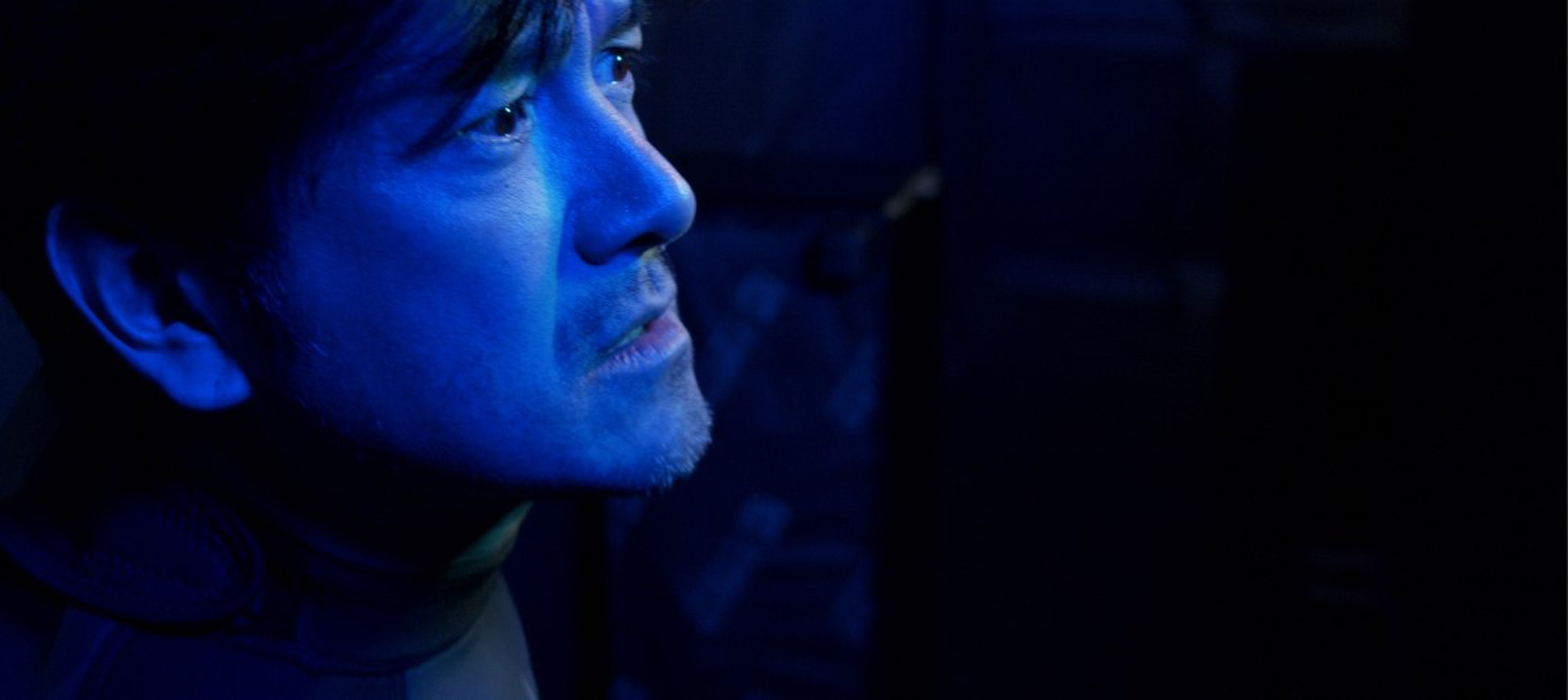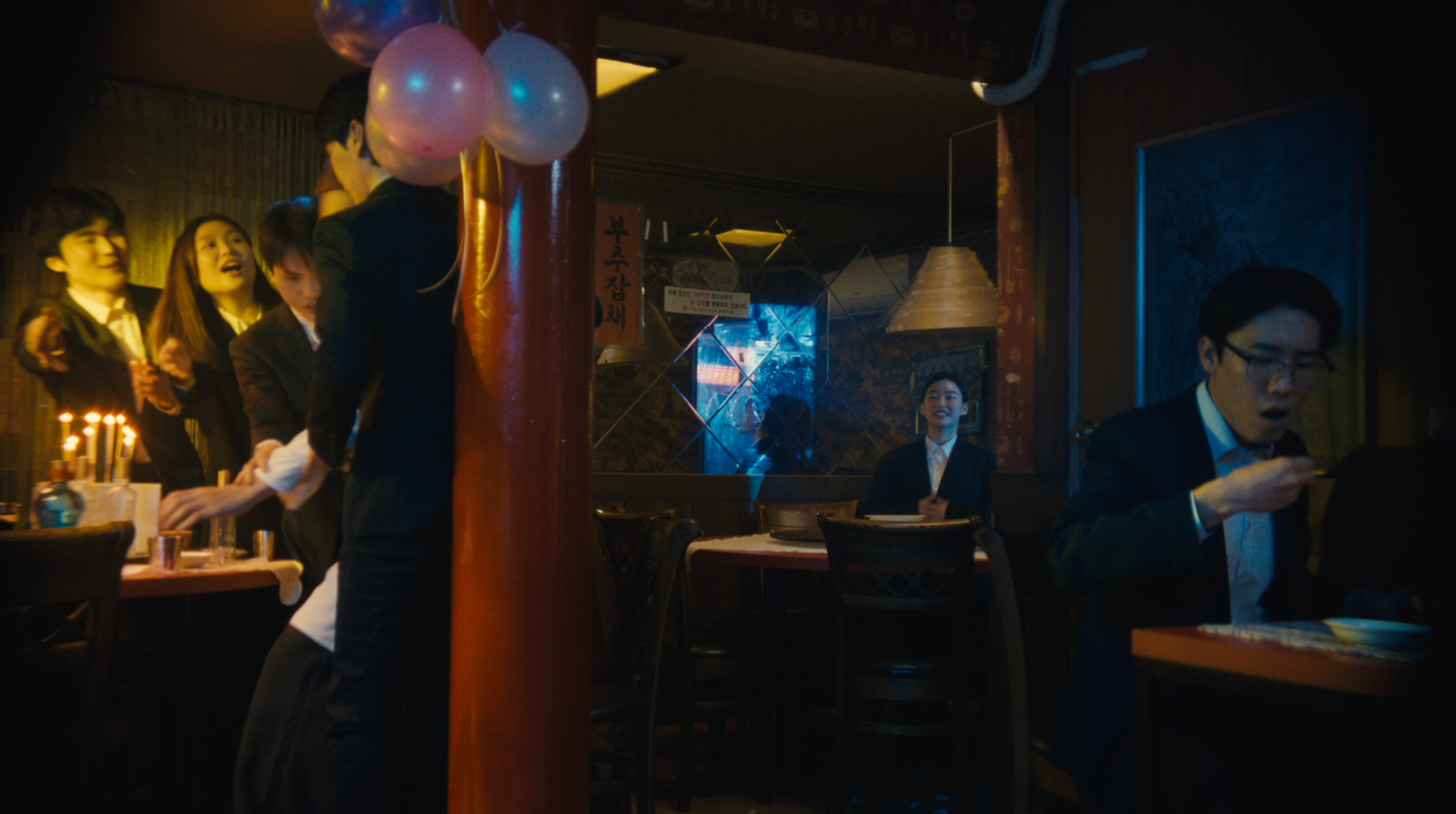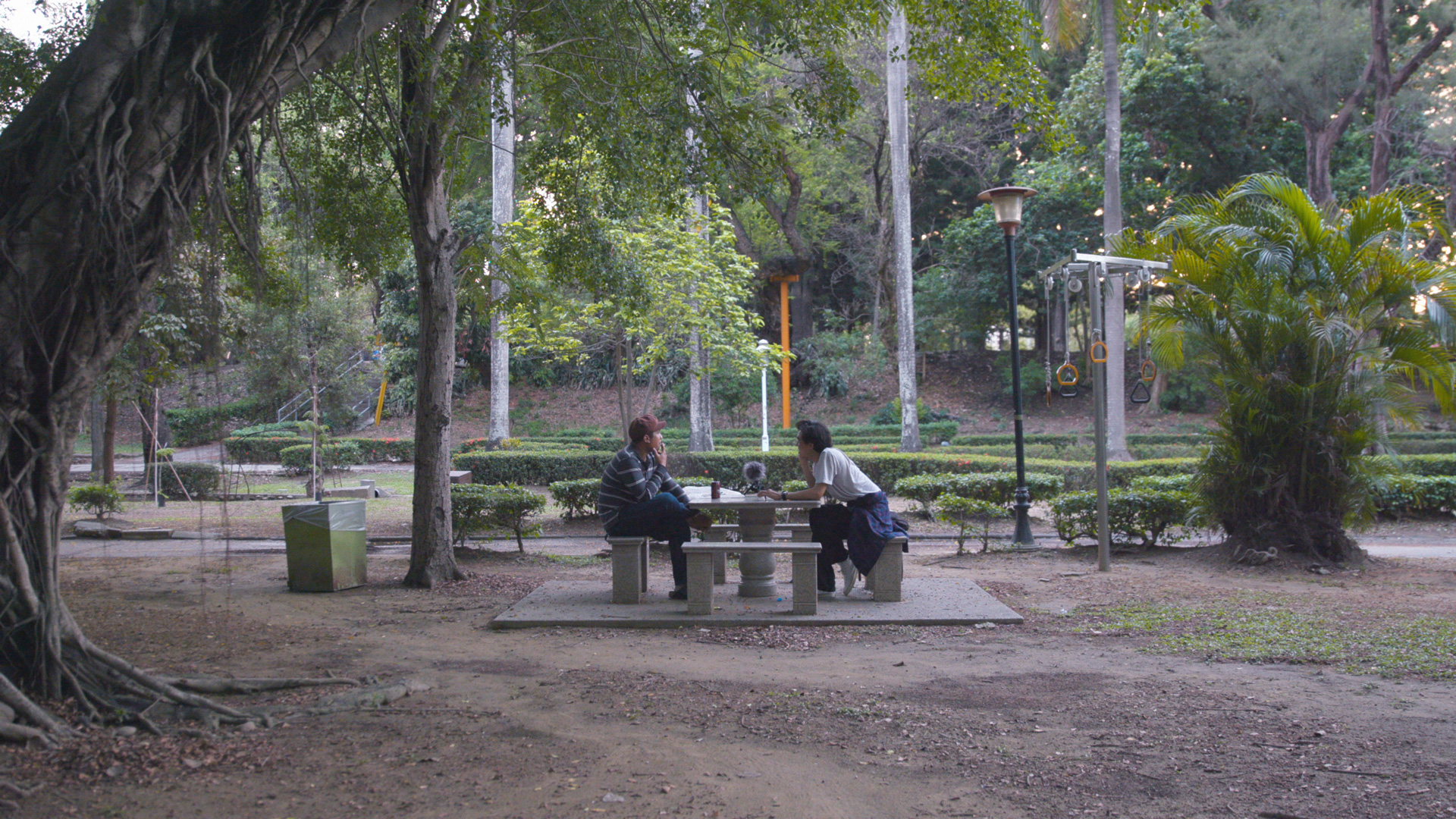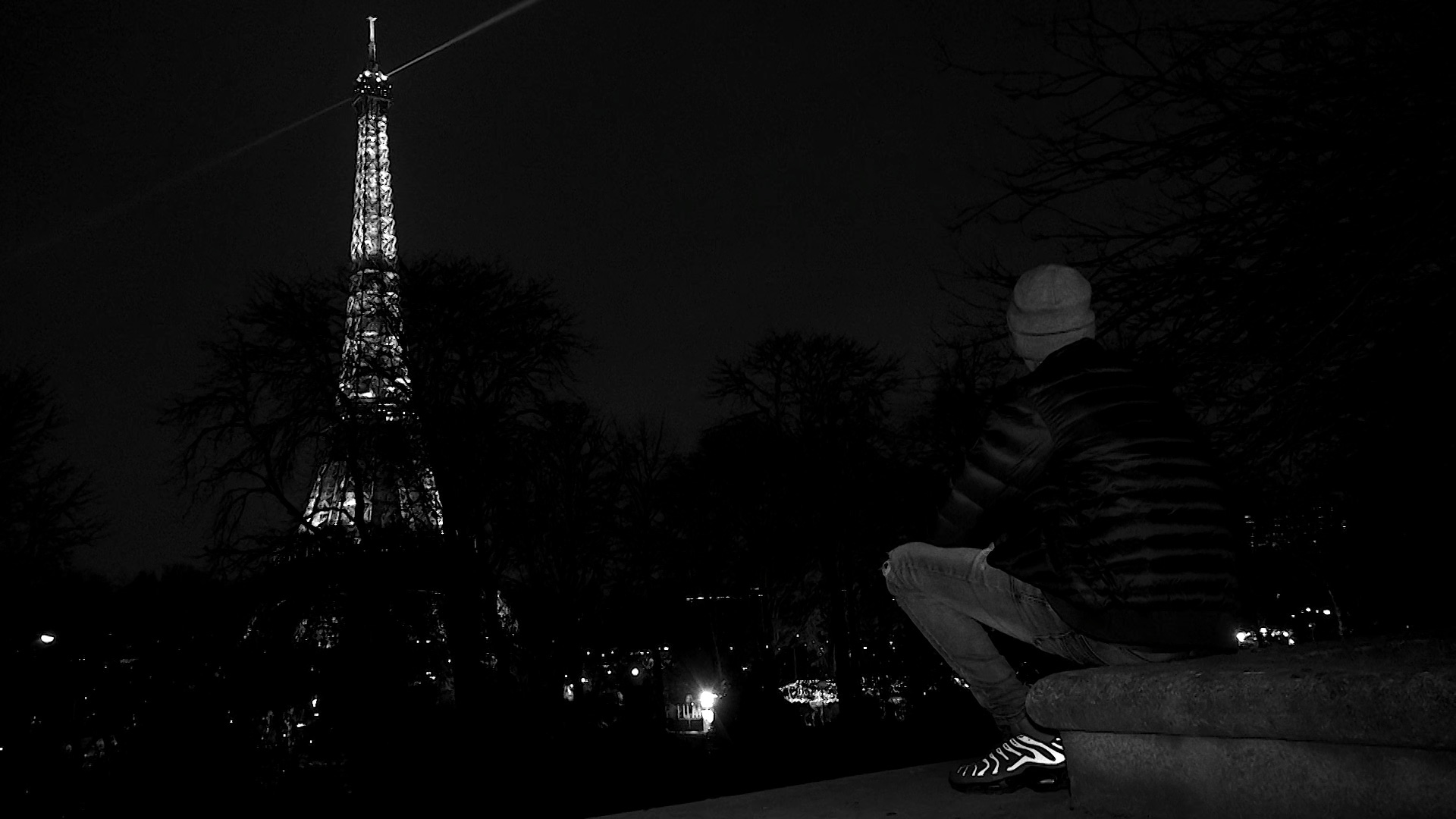새로운 물결 Onda Nova 감독 이카루 마르칭스 Ícaro (Francisco C) MARTINS, 조제 안토니우 가르시아 José Antonio GARCIA | Brazil | 1983 | 104min | Fiction | 시네필전주 Cinephile JEONJU
English text below
드디어 전망이 밝아지기 시작했다. 2024년 〈하나는 적고 둘은 좋아〉와 〈새로운 물결〉의 새로운 4K 디지털 복원판이 공개되면서, 수십 년간 불확실한 상태였던 브라질 영화 유산 보존 작업도 이제 고무적인 전환점을 맞이하고 있다.
이러한 놀라운 변화는 한동안 막막하게만 느껴졌던 질문에 새로운 의미를 부여한다. ‘복원된 영화들만으로 브라질 영화사를 이야기할 수 있을까?’ 얼마 전까지만 해도 이 질문은 불가능해 보였다. 상영 가능한 수준의 복사본이 남아 있는 작품 자체가 손에 꼽을 정도였기 때문이다. 예컨대 전 세계적으로 유명한 무성 아방가르드 영화의 대표작 〈리미트 Limite〉(마리우 페이쇼투, 1931)와 1960년대 글라우베르 호샤와 동시대 인물들이 주도하며 국제적으로 주목받은 시네마 노보 운동의 대표작 몇 편만이 전부였다.
〈하나는 적고 둘은 좋아〉의 놀라운 복원은 시네마테카 브라질레이라(Cinemateca Brasileira)가 원본 네거티브 필름을 정성껏 보관해 온 덕분에 가능했다. 이 영화는 1964년 시작된 군사 독재 체제가 점점 강압적으로 변하면서 브라질 영화계가 중대한 난관에 부딪힌 시기에 개봉했다. 오딜롱 로페스는 코미디 장르를 통해 “경제 기적”이라 불린 짧은 시기 동안의 브라질의 암울한 미래를 조명한다. 당시는 군부 정권의 “브라질을 사랑하라, 아니면 떠나라”라는 공식 구호와 세 번째 월드컵 우승을 차지한 시기와 맞물리면서 강요된 환희 뒤에 감춰진 폭력성이 더더욱 기승을 부린 때였다. 체제 전복적인 주제는 환영받지 못했고, 여러 분야의 예술가들은 가혹한 검열과 탄압에 시달리기 시작했다.
로페스는 이 작품을 통해 인종 분리라는 불편한 주제를 직설적으로 다루며 정권의 감시망에 포착됐다. 이 영화는 남부 지역에서 독립적으로 제작되어 제한된 규모로만 상영되었는데, 그렇지 않았다면 1970년 당시 상영이 금지됐을 것이다. 결국 이 작품은 수십 년 동안 거의 잊힌 채, 브라질 영화사에서 주석 한 줄로만 남아 있었다. 하지만 2024년 재개봉은 이 영화의 역사를 다시 쓰는 계기가 되었다. 오늘날에는 브라질뿐 아니라 전 세계에서도 〈하나는 적고 둘은 좋아〉를 빼놓고 흑인 영화를 논하기란 불가능에 가깝다. 같은 해에 만들어진 멜빈 밴피블스의 예리한 인종차별 풍자 코미디 〈워터멜론 맨 Watermelon Man〉(1970)이 이제 브라질판 영혼의 형제를 찾은 셈이다. 이 영화는 히피 세대의 어두운 이면을 드러내는 동시에 이후 글로벌 노스 의 조던 필 감독이 데뷔작 〈겟 아웃 Get out〉(2017)에서 다시 탐구한 ‘인종 간 연애가 불러오는 폭력’이라는 주제를 앞서 선보인 선구작이다.
한편, 군사 독재 말기에 제작된 〈새로운 물결〉은 브라질에서 여성 프로 축구가 금지되었던 시대를 배경으로 여성 축구팀의 일상을 조명하며 ‘전복’이라는 주제를 또다시 탐구한다. 젊은 여성 배우들로 구성된 인상적인 캐스팅은, 이전 작품 〈사랑의 엿보기 The Peephole of Love〉(1982)에서 여성의 시선으로 관음증을 탐구했던 조제 안토니우 가르시아와 이카루 마르칭스 감독의 연출 의도를 다시금 뚜렷하게 드러낸다. 강렬한 유머와 감각적인 관능미를 자랑하는 이 영화는 군사 정권이라는 한 시대가 끝나 가고 민주화라는 새로운 시대가 시작되는 과도기의 정체성을 담고 있다. 바로 그 이유로, 이 작품은 단순히 유쾌한 영화와는 거리가 멀다. 느긋하게 부조리를 포용하는 장면들 속에도 절망과 광기, 감정적 억압이 스며 있다.
가르시아와 마르칭스의 이 영화는 최근 브라질 극장에서 복원판으로 개봉했다. 덕분에 관객들은 이 작품을 현대 영화들과 나란히 감상하면서 1970~80년대 브라질 영화에서 반복적으로 나타났던 ‘에로티시즘’이 지난 수십 년 동안 자취를 감췄다는 점을 새삼 느끼게 되었다. 결국 이러한 영화 재개봉은 불편한 질문을 던진다. 브라질은 도덕적으로 더 보수적인 나라로 변한 걸까?
더 밝은 과거
약 4만 편의 작품을 소장한 남미 최대 규모의 영화 보관소, 시네마테카 브라질레이라는 불과 얼마 전까지만 해도 심각한 재정 및 인프라 위기를 겪고 있었다. 하지만 부활의 전환점을 맞이한 2022년부터는 야심 찬 복원 작업 및 보급 정책을 중심으로 기관을 운영하고 있다. 이 정책은 리나와 클로드 레비스트라우스 부부가 제작한 민족지 다큐멘터리부터, 브라질 사회의 인종차별 문제를 대담하게 다루어 로페스의 작품과 함께 상영하기에 안성맞춤인 조제 카를루스 부를리의 〈우리도 형제다 We Are Also Brothers〉(1949), 국제적인 경력을 쌓은 브라질 영화의 선구자 아우베르투 카바우칸치의 〈진짜 여성 A Real Woman〉(1954), 1960~70년대 모더니즘 영화의 흐름을 대표하는 주요 작품들까지 폭넓게 아우른다. 이러한 주요 작품으로는 사이키델릭한 영상미를 자랑하는 안드레 루이스 올리베이라의 〈메테오랑고 키드, 은하계의 영웅 Meteorango Kid, Intergalactic hero〉(1969), 비일부일처제를 다룬 페미니스트 영화의 기념비적 작품인 테레자 트라우트망의 〈내가 사랑한 남자들 The Men I Loved〉(1973) 등이 있다.
이러한 변화에 핵심적으로 기여하고 있는 또 다른 축은 엘레나 소우베르그, 에우니시 구트망, 카치아 메제우 같은 감독의 주요 작품을 디지털로 복원해 온 비영리 단체 ‘시네 리미트(Cine Limite)’나 데보라 부트루시 같은 복원가가 이끄는 독립 프로젝트들이다. 데보라는 〈하나는 적고 둘은 좋아〉 외에도 최근 몇 년간 여러 복원 작업을 진행하며 독재 시기 브라질 영화의 공백을 메우는 데 기여해 왔다. 대표적인 복원작으로는 만화적 미학과 무성영화 스타일의 색채를 자랑하며 ‘남자의 제1의 적’으로 불리는 전설적인 여성 캐릭터 ‘안젤라 플래시 앤 본’이 등장하는 〈모두의 여인 The Woman of Everyone〉(호제리우 스간제를라, 1969), 화려한 색채와 스타일화된 폭력이 폭발적인 퀴어 영화 〈악마 여왕 The Devil Queen〉(안토니우 카를루스 다폰토라, 1973), 아마존 지역 파괴를 예리하고 독창적으로 비판하여 오랜 기간 금지되었던 다큐픽션 걸작 〈이라세마, 아마존 거래 Iracema, uma transa amazônica〉(조르지 보단스키·오를란두 세나, 1975)가 있다.
실제로 〈하나는 적고 둘은 좋아〉와 〈새로운 물결〉이 개봉된 시기인 1970년부터 1983년까지 브라질 영화는 복잡하면서도 활기찼던 한 장을 기록했다. 이 시기는 시네마 노보 내부에서 미학적·정치적 급진성을 추구하는 그룹과 상업적 노선을 택한 그룹 간의 분열이 본격화한 시기였다. 한편으로는 수많은 관객을 극장으로 끌어모은 에로 코미디 장르가 정점을 찍었고, 다른 한편에서는 시네마 노보에 대한 대담하고 전복적인 응답으로 ‘시네마 마르지나우(Cinema Marginal)’라는 새로운 흐름이 등장하며 도전적인 작품들이 탄생했다. 그러나 이토록 매혹적인 역사는 전 세계에 거의 알려지지 않았다. 이번에 새롭게 복원된 작품들이 이 흐름에 변화를 불러올 것으로 기대된다.
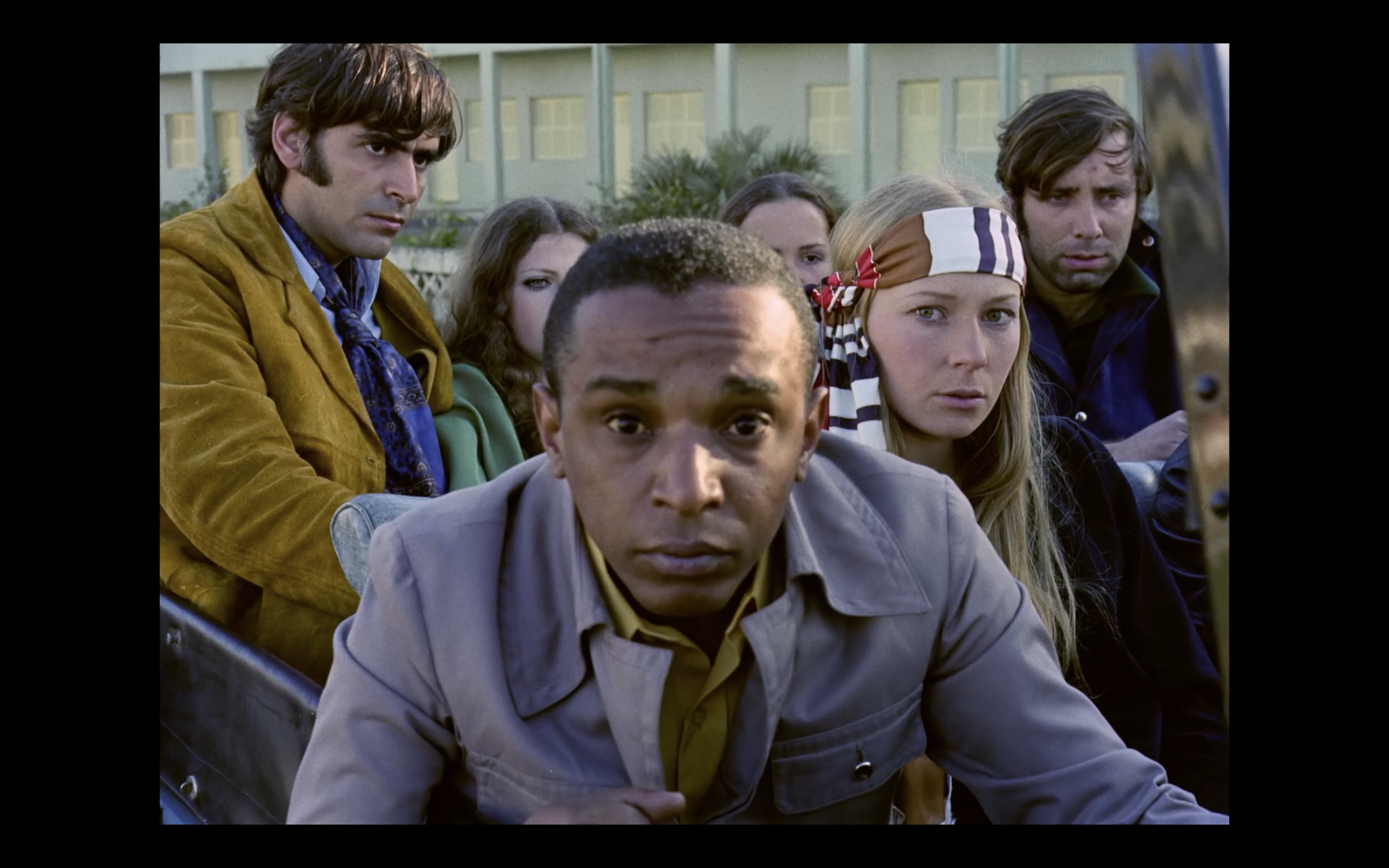
하나는 적고 둘은 좋아 One Is Few, Two Would Fill 감독 오딜롱 로페스 Odilon LOPEZ | Brazil | 1970 | 95min | Fiction | 시네필전주 Cinephile JEONJU
One could say that a promising horizon is now in sight. The release, in 2024, of new 4K digital prints of One Is Few, Two Would Fill (Odilon Lopez, 1970) and Onda Nova (Ícaro (Francisco C) Martins, José Antonio Garcia, 1983) reflects the exciting moment currently unfolding in Brazil's film restoration efforts, after decades marked by uncertainties in the preservation of its cinematic heritage.
This remarkable development makes a once-daunting question now gain relevance: Is it possible to tell the story of Brazilian cinema through restored films? Until recently, this seemed unfeasible, as only a handful of works existed in copies worthy of projection — such as Limite (Mário Peixoto, 1931), a world-famous milestone of our silent avant-garde, and a few canonical masterpieces from Cinema Novo, the movement spearheaded by Glauber Rocha and his contemporaries, which gained international recognition in the 1960’s.
One Is Few, Two Would Fill, for instance, whose stunning restoration was only possible thanks to the careful preservation of the original negatives by the Cinemateca Brasileira, was released at a time when Brazilian cinema faced a major impasse, following the intensification of repression under the Military Dictatorship, which began in 1964. Comedy was the genre chosen by Lopez to highlight the country’s bleak future during the (brief) period known as the Economic Miracle. The Military Government's official slogan — “Brazil, love it or leave it” — coincided with the national football team winning its third World Cup, further reinforcing the violence behind the imposed euphoria. Subversive themes were unwelcome, and artists from various fields began to face relentless censorship and persecution.
Lopez’s direct approach to racial segregation was an uncomfortable subject for the watchful eyes of the regime. Produced independently in the south of the country and released commercially on a limited scale (if not for that, it would be banned in 1970), his only feature film remained unseen for decades, becoming little more than a footnote in the country’s cinematic history. Its 2024 re-release offers a chance to rewrite that: today, it is inconceivable, for example, to study Black cinema — not only in Brazil — without acknowledging One Is Few, Two Would Fill, Watermelon Man (1970), Melvin Van Peebles’ biting comedy about racism, produced in the same year, now has a Brazilian soul brother, one that exposes the darker side of the hippie generation and anticipates a premise — the violence born from an interracial romantic relationship — later explored by another director from the Global North, Jordan Peele, in his debut feature, Get out (2017).
Produced in the final years of the dictatorship, Onda nova also explores the theme of subversion by portraying the everyday lives of a women’s football team — at a time when women were not allowed to play professionally in Brazil. The female-led cast, featuring a remarkable group of young actresses, underscores the cinematic vision of directors Garcia and Martins, who had previously examined voyeurism from a female perspective in The Peephole of Love (1982). With its explosive humor and exuberant sensuality, Onda nova reflects a defining characteristic of its era: it is a work created at the end of one period (the Military Regime) while already glimpsing the beginning of another (the process of democratization). For that very reason, it is not a purely euphoric film. Amid moments that embrace the absurd with an easygoing approach, one can also detect signs of despair, madness, and emotional entrapment.
The restoration of Garcia and Martins’ film has just been commercially released in theaters in Brazil, allowing audiences to view it alongside contemporary productions and to notice how the trace of eroticism — a recurring mark of the 1970s and 1980s — was largely abandoned in the decades that followed. The film’s re-release raises a thorny question: has Brazil become a more morally conservative country?
A brighter past
Not long ago, the Cinemateca Brasileira — the largest film archive in South America, housing approximately 40,000 titles — was grappling with a severe crisis in terms of infrastructure and funding. Since 2022, the year marking its institutional revival, an ambitious restoration and dissemination policy has been guiding the institution’s work. This includes everything from ethnographic documentaries produced by Lina and Claude Lévi-Strauss to classic works such as We Are Also Brothers (1949), in which José Carlos Burle boldly addresses the issue of racism in Brazilian society (a perfect double feature with Lopez’s film); A Real Woman (1954), directed by Alberto Cavalcanti, one of the pioneers of Brazilian cinema with a long international career; and key films from the modernist wave of the 1960s and 1970s, such as the psychedelic Meteorango Kid, Intergalactic hero (André Luiz Oliveira, 1969) and The Men I Loved (Tereza Trautman, 1973), a landmark of feminist cinema that explores the theme of non-monogamy.
A central contribution to this shift also comes from independent projects, such as Cine Limite, a non-profit organization responsible for the digital restoration of essential filmographies, including those of directors Helena Solberg, Eunice Gutman, and Katia Mesel, as well as work by restorers like Debora Butruce. In addition to One Is Few, Two Would Fill, she has produced several restorations in recent years that help fill the gaps in Brazilian cinema from the Dictatorship era, such as The Woman of Everyone (Rogério Sganzerla, 1969), a film with a comic-strip aesthetic, colorized in the style of silent films and featuring the legendary character Angela Flesh and Bone, “the number one enemy of men”; The Devil Queen (Antonio Carlos da Fontoura, 1973), a queer explosion of vibrant colors and stylized violence; and Iracema, uma transa amazônica (Jorge Bodanzky, Orlando Senna, 1975), a docu-fiction masterpiece that was banned for years due to its sharp and inventive critique of the devastation of the Amazon region.
The fact is that between 1970 and 1983 — the years marking the releases of One Is Few, Two Would Fill and Onda nova — Brazilian cinema experienced a complex and vibrant chapter. It was a period marked by a decisive split within Cinema Novo, between those who embraced aesthetic and political radicalism and those who sought a more commercial approach. It was also the peak of erotic comedies that drew massive crowds to theaters, while openly experimental filmmakers created provocative works within the Cinema Marginal movement, an audacious and transgressive response to Cinema Novo. Yet this is a captivating history that remains virtually unknown internationally. Hopefully, these new restorations will help change that.



